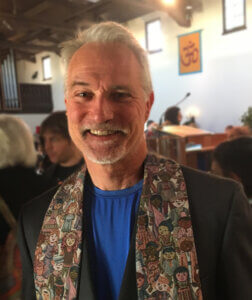 Dear Friends,
Dear Friends,
If you’re like most human beings looking at the planet right now – or, even, just our little part of it – and you’ve experienced the sad frustration of intractability, you are who I am writing to now.
We live in a time of both inexhaustible potential – in terms of innovation, technology, intelligence and experience – and inexhaustible need. Somewhere, in the melding of these two realities, is the exciting realm of possibility. If you’ve ever wondered why, in the boundless array of opportunity before us, we fail to make the difference that is within us to make, you know the primary conundrum of the 21stcentury. To successfully answer what has brought the last few generations to stagnation, and prevents the next few generations from moving forward, we have to understand the art of possibility.
Consider this story about a shoe factory that sends two independent marketing scouts to a region of Africa. They wish to study the prospects for expanding business. One scout sends back a telegram saying,
SITUATION HOPELESS – STOP – NO ONE WEARS SHOES
The other – on the same day, in the same region – writes back triumphantly,
GLORIOUS BUSINESS OPPORTUNITY – STOP – THEY HAVE NO SHOES”
The theme of the month for January is ‘Possibility,’ and I can think of no more important or appropriate a topic for us to ponder as a church community who is re-examining its place and purpose in this new and unprecedented time in social, civil and global evolution.
I want to draw a little bit from a book written by Ben and Roz Zander about 15 years ago called the Art of Possibility. In it, they emphasize the importance for anyone who wants to have a relevant impact in an age of intractability, of letting go of what led you to a stuck place in order to pick up what will get you out. In other words, once you find yourself well over your head in a deep hole, it’s time to put down the shovel and look for what points ‘UP and out’ instead of what directed you to the ‘DOWN and out’ place you’re in.
To do this requires one of the easiest and most obvious – as well as illusive and hardest – changes: to recognize and let go of the agenda behind stuckness. The reason this is hard and doesn’t happen easily is because it’s so difficult to admit – or even recognize – we have an agenda in the first place. Agendas are often quite unconscious to the owner. And an unconscious agenda is often the greatest obstacle to moving forward.
Agendas – especially the unconscious kind – are often built using old unexamined hurts and fears assembled together to protect us from further pain. This is quite understandable. But it is often difficult to ‘protect’ and ‘perceive’ at the same time. A mind in ‘protection’ mode will only recognize a small bandwidth of available information to incorporate into problem solving. And keen, open perception – even information that, at first, seems uncomfortable – usually proves essential in constructing a solution with wide relevance.
The framing that comes from our minds can both define – and confine – perceptions of possibility. That crucial first glance where we project confidence and invitation – or doubt and obstruction – can allow something to appear inevitable or impossible depending on the framing we provide. Creative and open framing of data causes many problems to vanish and new opportunities to appear
The UUSM board is working really hard at framing new ways to see beyond old stuck-ness. They are casting a vision that allows groups new ways to apply energy previously lost to confusion, old assumptions, hurt or distrust. They are setting goals and re-imagining every task so that everyone knows what ‘done would look like
And it’s not just for us here at the church. It’s so we, collectively, can be about the important work of bringing together Love and Leadership so as to create Justice. It’s so we can be about our mission of helping the world around us get unstuck. And so we can all move beyond old agendas and embark upon new possibilities.
To the Glory of Life.




